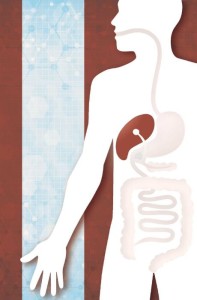 It’s becoming health threat at young age
It’s becoming health threat at young age
When David Martinez was diagnosed with advanced cirrhosis of the liver, he was surprised and confused.
“I thought cirrhosis came from drinking,” said Martinez, 50, a cable repair technician. “I asked the doctor, ‘Why is it that my liver is so damaged if I don’t drink?’”
The answer? Martinez, who is overweight and has Type 2 diabetes, had developed fatty liver disease — a condition that develops when too much fat builds up in the liver. When it occurs in people who drink little or no alcohol, it’s known as non-alcoholic fatty liver disease.
In some cases, inflammation and damage occur in a fatty liver. That condition, known as non-alcoholic steatohepatitis (NASH), can progress to cirrhosis and liver failure.
While other factors can cause fatty liver disease, it’s a growing health threat across the country because of the high rate of obesity, said Dr. Fred Poordad, vice president of academic and clinical affairs at the Texas Liver Institute in San Antonio.
As people become obese at a younger age, they’re winding up with fatty liver along with it.
“Now we’re seeing people in their 40s and 50s developing significant liver disease,” said Poordad, who also is a clinical professor of medicine at the University of Texas Health Science Center at San Antonio.
“We really think that we’re just at the tip of this iceberg, that we’re going to have a lot of trouble in the next 20 to 30 years with people developing cirrhosis as a result of fatty liver.”
The increasing rates of fatty liver disease are likely a factor in the rising rates of hepatocellular carcinoma, the most common form of liver cancer, said Dr. Ian M. Thompson Jr., director of the Cancer Therapy & Research Center at UTHSCSA.
Non-alcoholic fatty liver disease may affect as much as a quarter of the United States population, according to the American Liver Foundation.
“We see it in probably up to 90 percent of patients who are morbidly obese, (and) we see it in probably up to 70 percent of patients who have Type 2 diabetes,” said Dr. F. Blaine Hollinger,of the American Liver Foundation’s National Medical Advisory Committee.
The prevalences of fatty liver disease is higher in Latinos than in blacks and non-Hispanic whites, Poordad said; Latinos have a genetic predisposition to liver disease. Latinos in South Texas have the highest rates of hepatocellular carcinoma in the nation.
Patients with fatty liver disease often have no symptoms, although they may feel a dull ache or fullness in their right side, where the liver is located.
In many cases, people discover they have fatty liver only when a health-care provider spots an increase in liver size on a physical exam, sees an elevation of liver enzymes on a lab test or observes the fat on an abdominal ultrasound performed for another reason.
In Martinez’s case, a doctor discovered his fatty liver when Martinez underwent gall bladder surgery in 2008. Martinez didn’t notice symptoms — mainly bloating — until he had developed cirrhosis.
“Not everybody who has non-alcoholic fatty liver disease will have NASH, but it does help us to know where the risks are, which people we need to be focusing on,” said Hollinger, a professor of molecular virology and microbiology at Baylor College of Medicine in Houston.
Fatty liver disease is complex and not well understood. As the rates of the disease rise, though, more researchers — including some in San Antonio — are investigating the disease and ways to slow its progression.
Vitamin E has been shown to improve liver enzymes, according to the American Association for the Study of Liver Diseases. Weight loss also can make a big difference.
“With very obese patients, if we can get them to lose maybe only 3 to 5 percent of their weight, some of the fat will be reduced in the liver,” Hollinger said.
“If you can get them to lose 7 to 10 percent of their weight, we find these enzymes will often go back down to normal.”
Martinez enrolled in a clinical study at the Texas Liver Institute and receives medication intravenously. He also has changed his diet, with the help of his wife. At 6-foot-1, he has dropped from 300 pounds to 267 pounds. His liver enzymes — a marker of the disease — have decreased, and he feels much better, he said.
Improving patients’ health through proper nutrition and exercise is the best course, Poordad said.
“It really needs to be a multidisciplinary approach if we want to do this right,” Poordad said.
Reposted from San Antonio Express-News on January 10, 2015: www.expressnews.com/lifestyle/article/Obesity-can-lead-to-liver-disease-5909789.php







